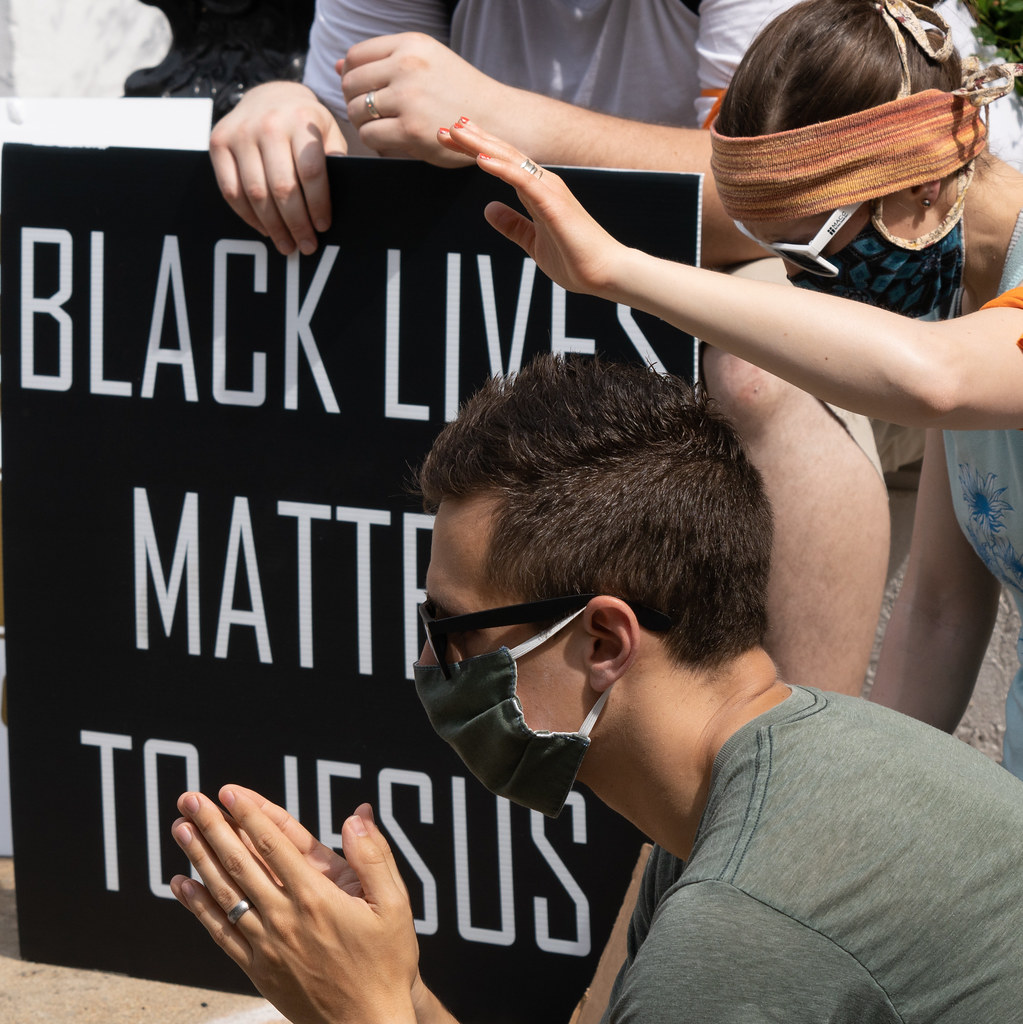Home » Posts tagged 'class and race intersection'
Tag Archives: class and race intersection
It’s Hard Right Now, but Keep Moving Forward
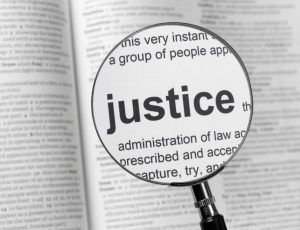 Denise Moorehead, UU Class Conversations
Denise Moorehead, UU Class Conversations
I sat in a staff meeting on Wednesday morning, May 25, 2022, listening to my colleagues share their reactions to a gunman’s rampage that killed 19 children and two teachers in Uvalde, Texas, the day before. We are administrators for private schools serving students from 2 to 20 years old. The head of our team said his first response was to scream, “NO MORE.” Another — the most buttoned-down one among us — said she was so #!!*ing tired of the carnage followed by nothing from those at the highest levels elected to make change.
When we talked about the steps we’d taken/needed to take to support our students and parents, the remarks by one school director broke my heart. She said with a deep sigh, “We sent an email to parents last night. We updated a message that was first written to families 10 years ago after the Newtown, Conn., massacre.” She added that she had updated that letter countless times for the many mass shootings since Newtown as well as for state-instituted killings like that of George Floyd.
In the past decade, our schools have made a substantial investment in improving security and in preparing students and staff to react quickly in cases of a dangerous intruder. So, why are we stuck in the same place 10 years after Newtown? As one politically-active colleague said of her own social justice efforts, “Why even bother anymore?”
Why? Because we must.
But It’s Hard
I have been involved in social justice work since I was a child. My mom took me to community-building activities while I was still in grade school. These are hard times for people who believe in social justice, equity, and addressing classism and racism.
The expected overturning of Roe v. Wade will most severely impact women and families with less class advantage. According to a May 2022 NPR report on the landmark Turnaway Study, women denied an abortion were four times more likely to be living in poverty years later than those who had one. Their children were less likely to attain higher education were more likely to be involved in crime and had lower adult earnings.
According to a recent study by Columbia University researchers, more than 3.7 million children in the U.S. slipped into poverty when conservative members of Congress refused to extend the expanded Child Tax Credit beyond December 2021. States across the nation have outlawed telling the truth about racism and the racial wealth gap, allowing transgender children to become themselves or even providing water to people waiting in line to vote (in under-resourced primarily black and brown areas). The proliferation of new voter suppression laws is meant to keep people of color and those with less class advantage from participating in American democracy. And this is the tip of the iceberg when we look at the backpedaling of policies that have advanced social justice, equity and equality.
The effects of these policy reversals have not and will not directly touch the lives of people in the sphere of our elected officials. Over half of the members of Congress are well-educated millionaires from safe neighborhoods with “good schools.” According to FundHero December 2020 research, even in local elections the average cost for each vote received is $1.00. I don’t know about you, but I don’t have $5,000 to be elected to the local Library Board.
It’s no surprise then, that most federal and local policies support those with more class advantage. This is true of gun laws also. According to Mark S. Kaplan, professor of Social Welfare at UCLA, there is a strong relationship between poverty, inequality and firearm violence*.
It’s Up to Us
It is hard to keep up the fight for justice right now, whether it is for social class, race, gender, LQBTQ+, disability rights and/or other forms of equity. But oppression can only fester and grow when people give up hope for a future that holds promise for each person. We can pause for a few moments to feel sad, overwhelmed and discouraged. We are human. But then we have to take a breath, regroup and keep pushing forward.
Here are just some of the lesser-known social justice pioneers I appreciate:
- Frances Perkins, the first woman to serve as a member of a U.S. president’s Cabinet and a champion of those with less class advantage.
- South African students who mobilized and led the 2015-17 #RhodesMustFall and #FeesMustFall movements that fundamentally changed the landscape of higher education in South Africa.
- U.S. racial justice heroes like John Lewis, A. Philip Randolph, Bayard Rustin, Ella Baker, Callie House and Fred Korematsu, Lupe Anguiano and Chrystos (Menominee)
- Frank Bowe who worked to help people with disabilities
- Modern-day and historical women’s rights activists like Panusaya Sithijirawattanakul and Emmeline Pankhurst
- Environmentalists like Nnimmo Bassey
Who are the modern-day and historical (s)heroes who inspire you to stay the course when you feel like giving up? Share yours in the comments below.
*The gun lobby is bankrolled by people and companies with deep pockets. Some contributors to the still powerful National Rifle Association have been Remington Outdoor Company (formerly Freedom Group), Smith & Wesson, Beretta USA, Springfield Armory, and Sturm, Ruger & Co. as well as accessories vendors MidwayUSA and Brownells (Violence Poverty Center). Individual contributors include more than a dozen wealthy Russians. The NRA, in turn, lines the campaign coffers of politicians willing to do its bidding.
Down with CRT?
“George Floyd protest” by vpickering
Critical Race Theory, or CRT, is an academic and legal framework that denotes that systemic racism is part of American society — from education and housing to employment and healthcare. Critical Race Theory recognizes that racism is more than the result of individual bias and prejudice. It is embedded in laws, policies and institutions that uphold and reproduce racial inequalities.
— Legal Defense and Educational Fund, Inc.
Critical Race Theory, or CRT, became the new rallying cry for people on the far right in 2021. A year before, there were rumblings against the highly academic and legal framework. But the rhetoric reached an entirely new level when then-President Donald Trump signed an executive order in 2020 prohibiting federal agencies from conducting diversity, equity and inclusion training. He justified his order by claiming that such training represented reverse racism and were part of the left’s efforts to indoctrinate people into its way of thinking through CRT.[i]
By falsely calling any discussion of racism, white supremacy, inclusion and/or equity CRT, those spreading this false narrative have succeeded in convincing even moderates – and not a few liberals – that the concept is divisive and harmful for children and harmful for American society as a whole.
Causing Harm and Shame
According to Florida Governor Gov. Ron DeSantis, CRT teaches kids to hate each other and is “state-sponsored racism.” Texas Senator Ted Cruz suggests that CRT causes white children to feel shame, shame that some of his fellow conservatives say can cause mental illness in these children. According to Spectrum News, Cruz tells fellow conservatives that they can spot CRT in texts that use the word “equity” frequently.
Armed with this misinformation, thousands of parents have stormed school committee meetings across the United States. The situation became so extreme that Reuter’s news agency commissioned a study on the issue. It reveals that more than half of the 31 school boards contacted said they had added extra security at meetings, limited public comment or held virtual meetings when in-person gatherings became too chaotic. (The 31 school boards contacted were just a microcosm of those actually affected.) In Loudoun County, Va., a letter was sent to one of the adult children of Brenda Sheridan, a school board member. It threatened to kill Sheridan and her child unless she left the board.
Sadly, the disruption has been rewarded. According to a Time.org April 14, 2022, article, 42 states have introduced bills or taken other steps that would restrict teaching CRT or limit how teachers can discuss racism and sexism. Seventeen states have imposed these bans and restrictions either through legislation or other avenues. Some ask parents, teachers and/or administrators to “turn in” teachers or professors who teach CRT or some of its supposed concepts. Voice of America reports that a bill passed in Indiana “permits parents to bring complaints and legal action against schools.”
But is CRT actually causing this harm and shame or is it our country’s inability at best and outright refusal at worst to deal honestly with racism and the long-term results of white supremacy?
I argue that in the hands of people like Cruz and DeSantis, CRT stands for Conservatives’ Revisionist Truthlessness.
Unintentional Truth?
Dr. Greg Ganske, former congressman from Iowa and a vocal CRT critic, seems to contradict his own anti-CRT stance when he argues that CRT has two common themes. According to Ganske, CRT maintains that white supremacy preserves power through the law, and the relationship between law and racial power must be transformed.
But maybe Ganske is simply being honest. As a plastic surgeon and former political operative, he has benefited from the power that white supremacy has brought him, and perhaps he does not want laws to change to level the playing field and provide the dreaded “equity” that those waging war against CRT malign and fear.
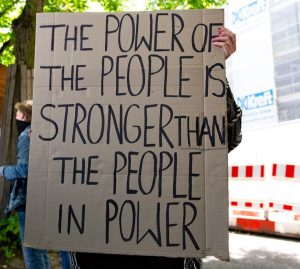
CRT foes fear the racial awakening brought about by the murder of George Floyd. For many white Americans, the Floyd video was the first time they saw the effects of the raw racism that has plagued our country for centuries. As they marched through the streets, white Americans and others around the world committed to ending racism and white supremacy, understanding the damage that racism does to them as well. That commitment sparked fear in the hearts and souls of people who believe that the end of white supremacy will siphon off their power.
Personally, as someone who works on issues of class and racial justice, I do not see equity through a zero-sum lens. I do not believe that because you have enough I must go without the things that I need. I think we can both have our needs met – with enough left over for getting not only what we need but some of what we want also.
I do believe, however, that some people, institutions, nations or world regions might take so much that there is little left. That is where CRT comes in and provides a process by which we can make America, and the rest of the world, truly great.
How Does CRT Work?
When Kimberlé Crenshaw, a law professor at UCLA and Columbia, coined the phrase Critical Race Theory in 1989, she saw it as a tool to explain how laws and legislation in the United States are deeply rooted in systemic racism. [ii]
For example, in the early 1700s, shortly after the first Africans were brought to the United States, laws were passed to make it illegal for enslaved people to learn to read and write. Slavery was enshrined in the Constitution in 1787. The Naturalization Act of 1790 denied citizenship to anyone who was not white. The 1800s alone, saw the passing of myriad anti-white legislation, including the Chinese Exclusion Act, Indian Removal Act, Jim Crow laws and many more.
Racist laws continued well into the 1900 and 2000s. One example of this is the game-changing legislation that provided housing loans for WWII GIs. Written into the legislation was language explicitly denying loans to African American veterans. Another example? Alabama did not alter language that prohibited miscegenation until 2000.
Recent anti-CRT laws are just the latest in legislation intended to continue inequity and racism. But instead of causing division, CRT helps us understand that racism is indeed baked into the history of the United States and provides the framework that can help us bring about racial healing together as a community.
The Way Forward
Seeing exactly how laws and societal practices have normalized and institutionalized racism allows us to craft legislation which can undo the harm caused. Just as important, it helps us face the truth as a nation, see the scope of the problem and change practices – and hearts – as well. In the words of Mari Matsuda, a law professor at the University of Hawaii and an early developer of critical race theory, “We have a serious problem that requires big, structural changes; otherwise, we are dooming future generations to catastrophe.”[iii]
Ultimately, CRT will have the opposite effect of the one fear mongers predict. Instead of making white children and people feel bad, it will motivate them to continue to work with BIPOC peers to help the United States to live up to its ideals. We can be the shining beacon for the world that the writers of the Constitution – despite their own shortcomings – envisioned for the generations before them.
And, yes, I am down on the way some people use CRT, when it mean Conservatives’ Revisionist Truthlessness.
[i] Center for Law and social Policy: https://www.clasp.org/blog/how-abolishing-critical-race-theory-preserves-white-power/
[ii] Ibid
[iii] Critical Race Theory: A Brief History, New York Times: https://www.nytimes.com/article/what-is-critical-race-theory.html
Stop the Hate Against AAPI Communities
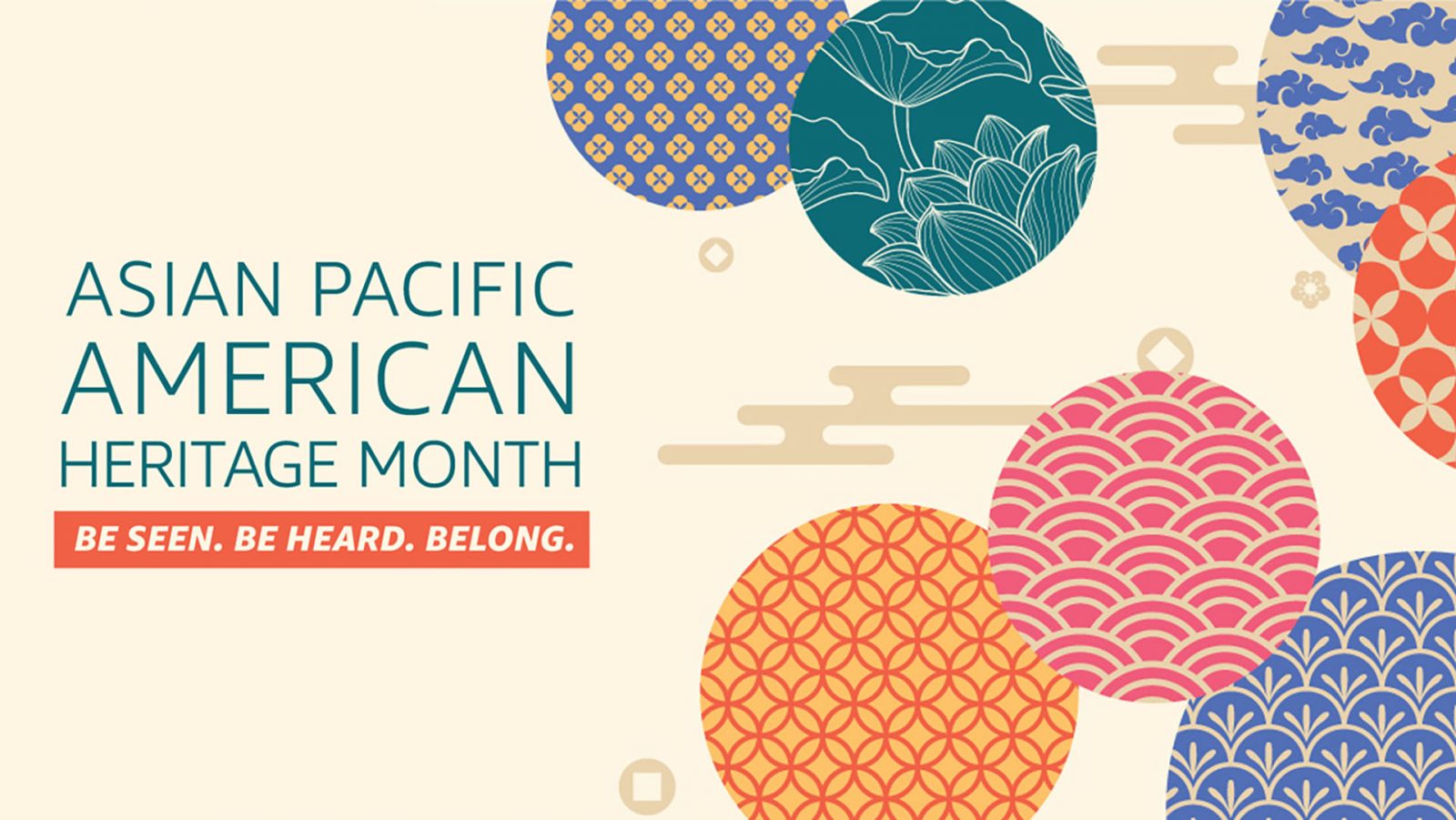 Systemic racism and acts of terror towards Asian Americans and Pacific Islanders have dominated media headlines in the past few months. Sadly, while hate incidents against the AAPI community have escalated in the past year, surpassing 6,000 reported incidents between 2020 and 2021, this not a recent occurrence in America.
Systemic racism and acts of terror towards Asian Americans and Pacific Islanders have dominated media headlines in the past few months. Sadly, while hate incidents against the AAPI community have escalated in the past year, surpassing 6,000 reported incidents between 2020 and 2021, this not a recent occurrence in America.
Anti-Asian sentiments, oppression and violence date back centuries.
The United States imported Chinese workers in the 19th Century to build the railroad system. Once it was built, the workers, who had been cheap sources of labor for employers, were seen as competition by many White working class Americans. The anti-Asian sentiments led to Chinese men and their families being driven from towns, lynched and subjected to newly passed anti-immigration laws.
We have witnessed anti-Asian sentiments becoming increasingly hostile during the pandemic, escalating from verbal to physical attacks to most recently, mass murder.
The belief that Asians carry disease and that they should return to Asia no matter how many generations their family has been in America is often shared on social media. Many Americans also confuse the concepts of country and continent and label Asians as a single demographic, all from the same place. This diminishes the rich and varied cultural beliefs, values, religions and spiritual traditions of the Asian diaspora.
Rich Culture(s)
There are many ethnic identities, cultures and languages within this diverse group of people. In the United States alone, this racial category, according to the Census, refers to more than 40 different ethnic groups. Moreover, in the past 40 years, there has been a widening of income inequality among Asian populations, which has led to social and economic consequences for some. Education and income levels vary widely among Asians. Although they rank as the highest earning racial and ethnic group in the United States, the wide and rapid economic divide belies the growing class differences within this group.*
One lingering remnant from the immigration laws restricting Asian migration within the United states is that a large percentage of Asians and Asian Americans still live in states where there were major points of entry for earlier Asian immigrants, such as New York, California and Hawaii.
While Asian migration throughout the United States has been more prevalent since the mid-1960s, when these laws were overturned, there are still places in the United States where Asians are viewed as exotic and foreign, and not “real” Americans. It is not incidental that people of Japanese descent in America, not German, were imprisoned in internment camps during World War II.
Next Steps for UUs?
What does this mean for us as UUs? We at UU Class Conversations believe that remaining true to our Principles will help break down divisions along class and racial lines. Creating an inclusive community for all racial and ethnic groups begins with meaningful and productive dialogue aimed at combatting racial and class injustice.
What do you see then as next steps for this work?
* Pew Research Center, July 12, 2018, “Income Inequality in the U.S. Is Rising Most Rapidly Among Asians.”
Unity Based on Justice
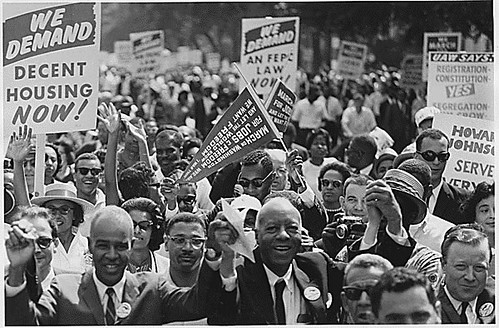 In July of 2020, UU Class Conversations published the blog post The Time to Unite as One America is Now about police brutality and the systemic oppression of Black and other people of color throughout the United States. It focused on how the deaths of black and brown men and women by police officers sparked international protests. The protesters were labelled terrorists, thugs and unpatriotic by some conservative media outlets and politicians.
In July of 2020, UU Class Conversations published the blog post The Time to Unite as One America is Now about police brutality and the systemic oppression of Black and other people of color throughout the United States. It focused on how the deaths of black and brown men and women by police officers sparked international protests. The protesters were labelled terrorists, thugs and unpatriotic by some conservative media outlets and politicians.
Just a few weeks earlier, some of the same media outlets and politicians had proffered a very different response when heavily armed, mostly White, protesters stormed the Michigan capitol building, threatening to kidnap and possibly kill the governor. Why? The rioters were upset about stay-at-home orders during a pandemic.
These protesters were called patriots. Police stood down, the National Guard was not called in to quell the unrest, and there were no arrests, no tear gas deployed, and no curfews imposed and enforced. Both times Americans were exercising their First Amendment rights. Yet, there were very different outcomes and consequences for those protesting.
Down a Dangerous Road
Well, fast-forward less than six months later and due to a steady stream of falsehoods and conspiracy theories from politicians, including the lame duck U.S. president about the legitimacy of the presidential election, a mob of armed white supremacists were incited to attempt an insurrection of another American Capital building. The intent was the same: Harm the legislature, including the vice president, speaker of the House and members of the House and the Senate. This time, the riot was deadly and dozens of police officers were injured and six people have died: All this in America.
Using Racial Tropes to Obscure Class
Why? Well, the idea that real Americans can only look a certain way and cannot be immigrants or people of color or a different religion. Many Americans overwhelmingly ignore the fact that class inequalities are not just part of the black or brown experience but a struggle for all Americans who are low-income or working class. This is increasingly true also for middle class people. This ingrained belief keeps many lacking class privilege from joining others of a different race or religion and undercuts any potential unity across racial lines.
There is little self-reflection for most Americans on how their class differences shape their backgrounds and unique attitudes and behaviors. Few consider how these class differences actually can bridge racial and religious divides, if explored. The class designation is overshadowed by the ever-present racial divide. So much so that economic initiatives often proposed by progressive or moderate politicians are viewed as handouts or bailouts by certain Americans. Stimulus checks, for example, are considered nonessential because they would go to the undeserving.
The idea that those with less class advantage are lazy is often intentionally conflated as coded messages about immigrants and people of color and creates an us versus them paradigm. Imagine, if people living in poverty and those in the working and middle class actually recognized that their commonalities outweigh their differences?
Our Truth
Some White poor and working class people continue to believe that they have more in common with others of their race who have substantial class privilege than they do with black and brown people of limited privilege. They have bought the idea that the We (Whites of all classes) have to stick together to protect our country, our flag, our families and our country’s traditions as Whites – despite economic differences. It’s imperative, or the them will take over, and as the neo-Nazi chant in Charlottesville suggested, they will erase us.
The idea that the votes of people of color are less legitimate than those of Whites is a shameful part of American history that is still alive and why insurrectionists carried Confederate flags through the Capital buildings during both riots.
With the current (and much-needed) focus on racial differences, Americans overwhelmingly are unable to recognize class and classism. Moreover, American economic and political systems that widen the income gap are rarely challenged in substantive ways. The status quo is the gold standard, and U.S. policies and practices routinely benefit the wealthy and affluent at the expense of other Americans.
Until we as a nation wake up and realize that the status quo is not working for most Americans, we are destined to routinely make the same choices that continue to divide us. And, if the latest insurrections teach us anything, there is a growing angry and violent group of Americans who, if not addressed, are intent on ripping the country apart.
But there is much cause for hope in the coming months. The end of the coronavirus – while still distant – is finally in sight. The fervor of the racial justice movement is still high. New federal leadership has said it is committed to addressing class inequities and white supremacy. So, in our UU congregations and organizations let’s heighten the meaningful dialogue – and act upon – racial and class justice.

